| ________________
CM . . . . Volume XVI Number 29. . . .April 2, 2010. 
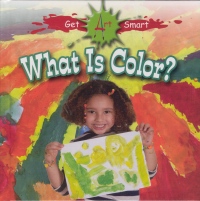 |
What is Color? (Get Art Smart).
Tea Benduhn.
St. Catharines, ON: Crabtree, 2010.
24 pp., pbk. & hc., $7.95 (pbk.), $18.36 (hc).
ISBN 978-0-7787-5137-3 (pbk.), ISBN 978-0-7787-5123-6 (RLB.).
Subject Heading:
Color in art-Juvenile literature.
Grades 1-2 / Ages 6-7.
Review by Gail Hamilton.
***/4
|
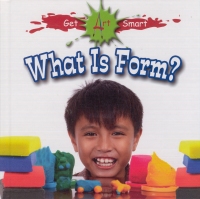 |
What is Form? (Get Art Smart).
Susan Markowitz Meredith.
St. Catharines, ON: Crabtree, 2010.
24 pp., pbk. & hc., $7.95 (pbk.), $18.36 (hc).
ISBN 978-0-7787-5138-0 (pbk.), ISBN 978-0-7787-5124-3 (RLB.).
Subject Headings:
Composition (Art)-Juvenile literature.
Form (Art)-Juvenile literature.
Grades 1-2 / Ages 6-7.
Review by Gail Hamilton.
***/4
|
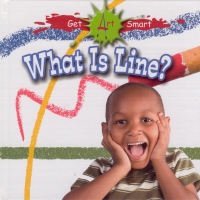 |
What is Line? (Get Art Smart).
Susan Markowitz Meredith.
St. Catharines, ON: Crabtree, 2010.
24 pp., pbk. & hc., $7.95 (pbk.), $18.36 (hc).
ISBN 978-0-7787-5136-6 (pbk.), ISBN 978-0-7787-5122-9 (RLB.).
Subject Heading:
Line (Art)-Juvenile literature.
Grades 1-2 / Ages 6-7.
Review by Gail Hamilton.
***/4
|
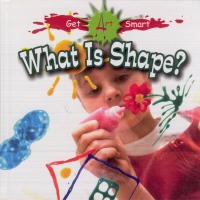 |
What is Shape? (Get Art Smart).
Tea Benduhn.
St. Catharines, ON: Crabtree, 2010.
24 pp., pbk. & hc., $7.95 (pbk.), $18.36 (hc).
ISBN 978-0-7787-5139-7 (pbk.), ISBN 978-0-7787-5125-0 (RLB.).
Subject Headings:
Shapes-Juvenile literature.
Art-Juvenile literature.
Grades 1-2 / Ages 6-7.
Review by Gail Hamilton.
***/4
|
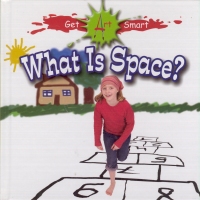 |
What is Space? (Get Art Smart).
Susan Markowitz Meredith.
St. Catharines, ON: Crabtree, 2010.
24 pp., pbk. & hc., $7.95 (pbk.), $18.36 (hc).
ISBN 978-0-7787-5140-3 (pbk.), ISBN 978-0-7787-5126-7 (RLB.).
Subject Heading:
Space (Art)-Juvenile literature.
Grades 1-2 / Ages 6-7.
Review by Gail Hamilton.
***/4
|
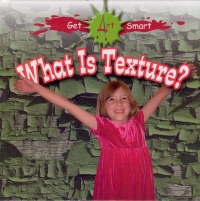 |
What is Texture? (Get Art Smart).
Stephanie Fitzgerald.
St. Catharines, ON: Crabtree, 2010.
24 pp., pbk. & hc., $7.95 (pbk.), $18.36 (hc).
ISBN 978-0-7787-5141-0 (pbk.), ISBN 978-0-7787-5127-4 (RLB.).
Subject Heading:
Texture (Art)-Juvenile literature.
Grades 1-2 / Ages 6-7.
Review by Gail Hamilton.
***/4
|
| |
|

excerpt:
We can add black or white to change colors. We can mix black with colors to make shades. If you add black to red, you make the color burgundy. Burgundy is a shade of red. We can mix white with colors to make tints. We can mix white with red to make pink. Pink is a tint of red. (From What is Color?)
Designed to introduce primary students to the six basic elements of art, the titles in the “Get Art Smart” series show readers how art can be used to tell a story, convey a feeling or capture a moment in time. Each book consists of 10 chapters, a table of contents, a brief glossary (with pictures instead of definitions), and a list of books and web sites related to the topic. The series has several strengths: concepts are explained in a kid-friendly way; the text is printed in a very large, simple font, and the vocabulary is repeated often (great for beginning readers); the examples of art are taken from different periods in history and represent various media. Even kids’ art is showcased occasionally.
What is Color? explains the colour wheel, primary, secondary and complementary colours, the difference between warm and cool colours, and shades and tints. Readers will also learn how colour can evoke a feeling. Examples of art include works by Monet, Van Gogh, Renoir and Toulouse-Lautrec.
What is Form? discusses two and three-dimensional objects and encourages kids to examine their environment, both natural and manmade, for geometric forms. This title showcases free-standing and relief sculpture and tells how artists can use special painting techniques to make objects look three-dimensional on a canvas or a piece of paper.
Lines can be straight, curved, thick, thin, wavy, zigzag or broken, and they can be vertical or horizontal. Artists can use line to outline an object, to show emotion, to suggest pattern or movement, or to add texture. Depending on their purpose, lines can be use singly or with others. Examples of each of these are provided in What is Line? by means of photos of various media, including engravings, India ink-based paintings, ink line drawings and oil paintings.
What is Shape? invites children to look for geometric and organic shapes in their environment and in the photographs of famous paintings in the book. The ways in which artists use shape to convey scale and perspective are explained, although the terms themselves are not mentioned.
Space, as it relates to art, can be defined as the empty area between and around objects, while things that take up space are referred to as form. What is Space? examines art with respect to size, foreground and background, dark and light, and positive and negative space in optical illusions.
Finally, What is Texture? features some of the ways in which artists add texture to their paintings. These techniques include the use of specific types of canvas or paper, tools such as sponges, and different materials, some examples being mosaic tiles, clay and glued objects, in order to achieve the desired effects.
With simple explanations, plenty of visual examples and age-appropriate vocabulary, these books fulfill their intended purpose and would be of use in the primary classroom.
Recommended.
Gail Hamilton is a former teacher-librarian in Winnipeg, MB.

To comment on this title or this review, send mail to
cm@umanitoba.ca.
Copyright © the Manitoba Library Association. Reproduction for personal use is permitted only if this copyright notice is maintained. Any other reproduction is prohibited without permission.
NEXT REVIEW |
TABLE OF CONTENTS FOR THIS ISSUE- April 2, 2010.
AUTHORS |
TITLES |
MEDIA REVIEWS |
PROFILES |
BACK ISSUES |
SEARCH |
CMARCHIVE |
HOME |





